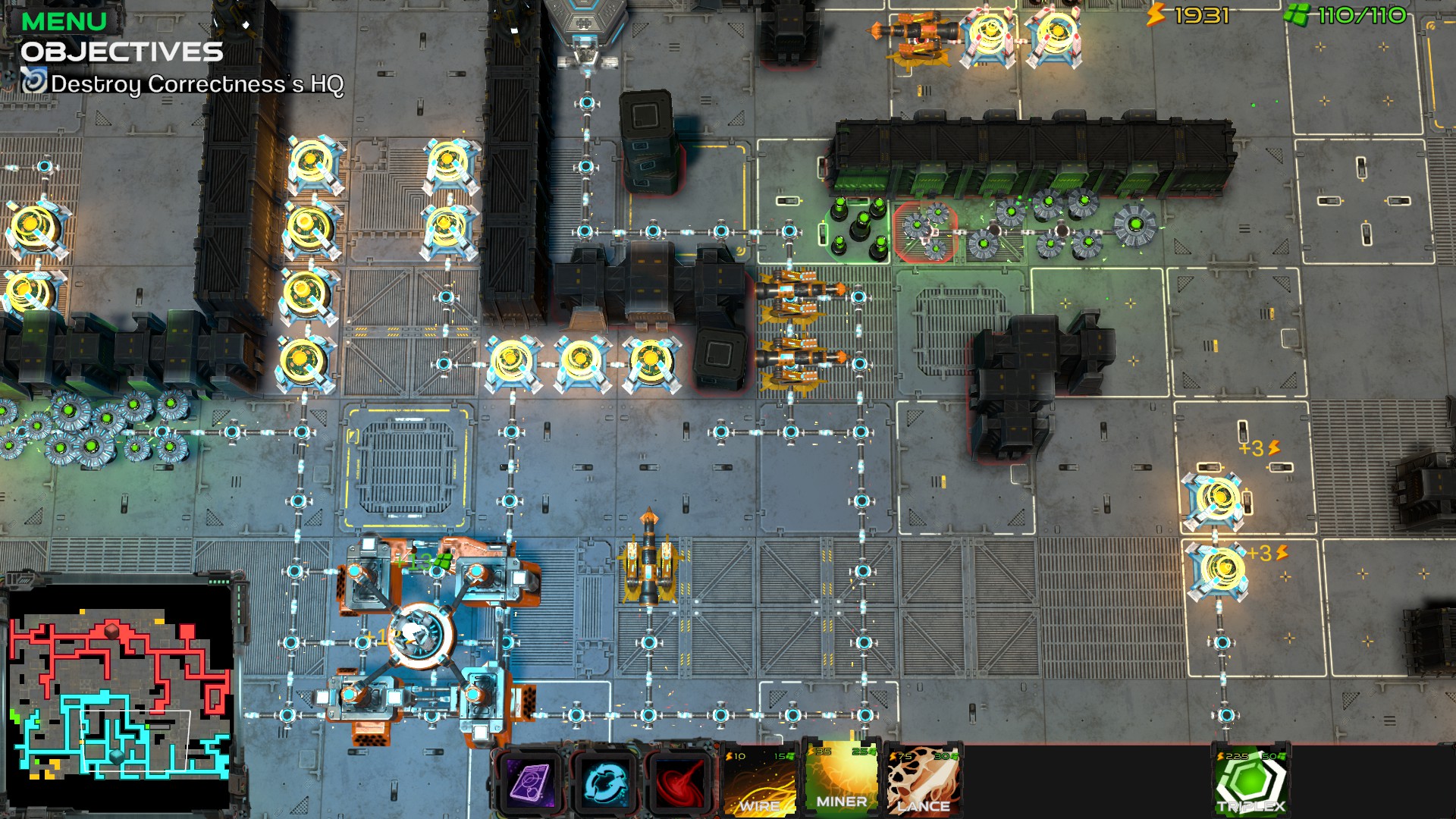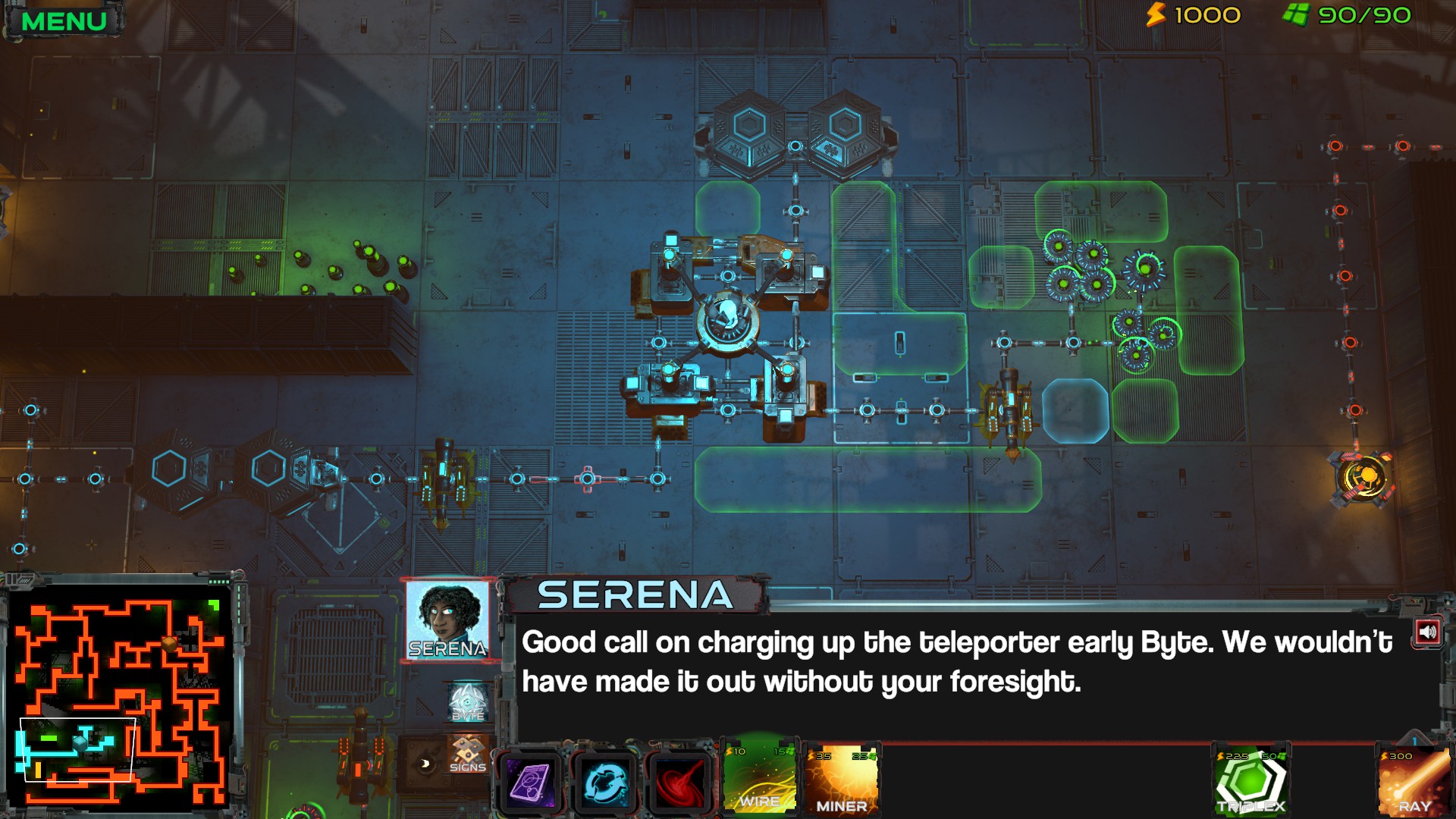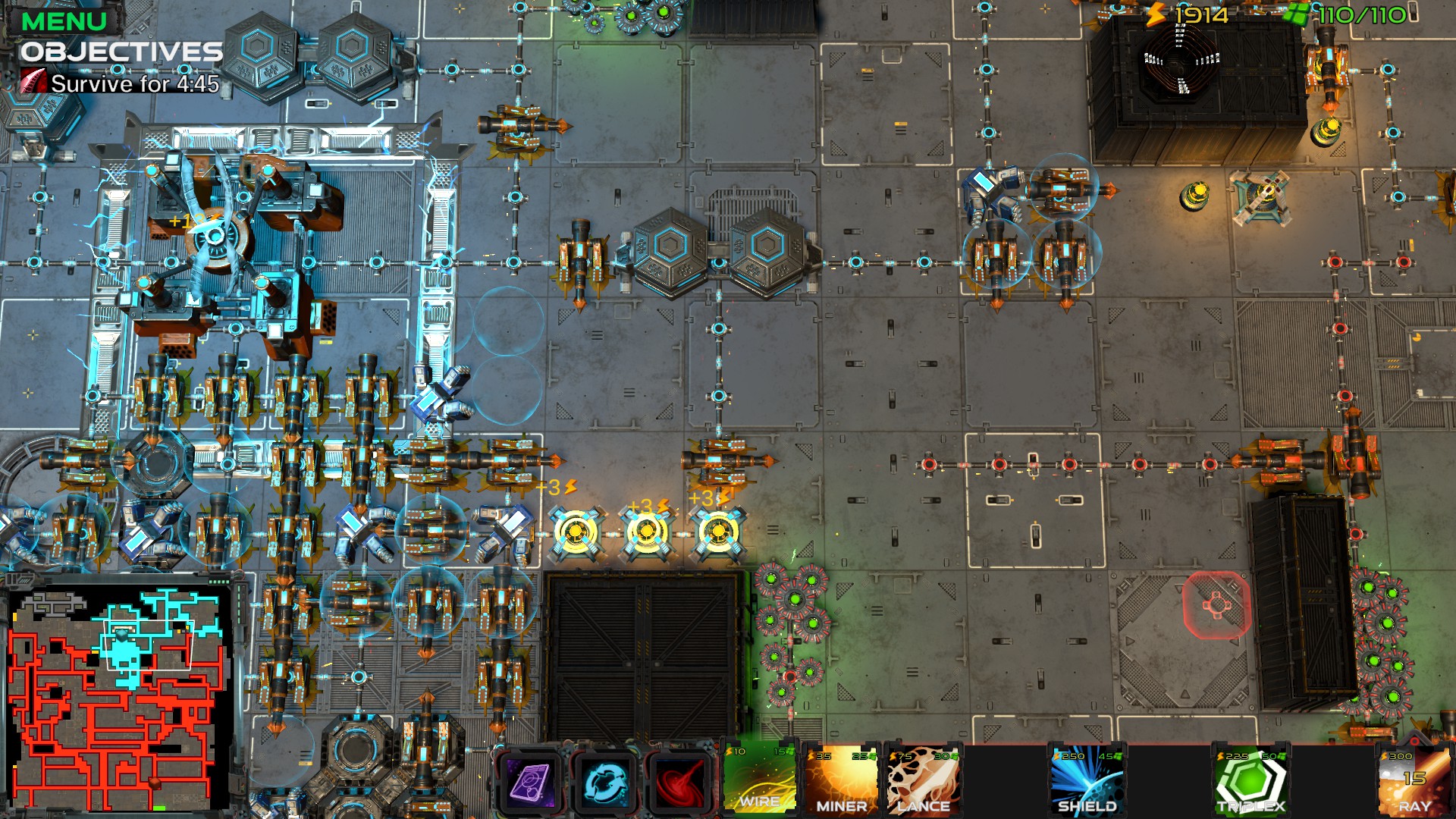Byte Lynx review
2023-09-20 by George P
Reviewed on
PCPlatforms
PC
Developer
Artful GamesPublisher
Artful Games
New Mechanics in a Mechanical Planet
Byte Lynx is an innovative real-time strategy game that aims to introduce unique concepts and transform foundational aspects of the traditional RTS formula. Assume the role of Captain Serena in an eventful campaign in a one-of-a-kind sci-fi world. After Serena’s fleet crashes on the surface of an uncharted machine-like planet, it will be your duty to recover survivors and plan an escape route. The plot will thicken as you encounter Byte, an artificial intelligence native to the planet and an unlikely ally in this desperate situation. Alongside Byte, you and your crew will journey through the darkest corners of the cold mechanical landscape as you battle corrupted foes and discover hidden secrets. While the storyline is of course a minor element of this gameplay-focused experience, I still very much enjoyed the course of this distinct adventure. RTS titles often adopt either a campaign-focused approach or a sandbox-based one and I am more than glad that Byte Lynx decided to follow the former. Due to the unique nature of Byte Lynx’s gameplay loop, a campaign model helps players smoothly comprehend both the game’s essential mechanics and its more in-depth novel features.
The pacing of the overall experience is excellent and allows for the unfolding of gameplay complexity without ever feeling cumbersome or overwhelming. And gameplay complexity is where Byte Lynx is able to truly shine. Through a combination of carefully designed systems and innovative twists, Byte Lynx is able to produce a core gameplay loop that feels deep, intricate, and most importantly, fresh. To properly understand the peculiarities of this gameplay loop, we have to first distil Byte Lynx’s most defining design choices.

Real Time Shock
The two-person studio behind Byte Lynx states that their goal with this title was to create an “innovative gameplay experience”. I can confidently say that this is something they skillfully achieved. And their accomplishment is something that both veterans of the genre and less experienced players will be able to recognize and appreciate. The game’s most radical twist, and simultaneously its most integral feature, is the lack of units. Yep, you heard that right. Byte Lynx has no units and features a combat system entirely based on constructing buildings of all types (offensive, defensive, resource, utility, etc.). What’s even more interesting about this unit-free combat system is that it functions on a grid-based network. Buildings need to always be connected to a web of wires that links back to your Core which acts as the heart of your domain. Things get even more intriguing once we examine another staple RTS rule that Byte Lynx revamps, ownership. In traditional RTS titles, the ownership of units and buildings belongs to the player who has constructed them. In a very simple manner, Byte Lynx is able to brilliantly subvert this staple rule and provide a completely new way to view the battlefield. The player controls a building only if said building is linked to the player’s core, regardless of who had originally constructed it. Meaning that if part of a player’s wire network is shattered, then the disconnected segment becomes neutral until either side is able to capture it.

This cleverly simple twist is able to fundamentally alter the way one understands RTS tactics and applies them during a match. There are many other exciting surprises and unique concepts that Byte Lynx delicately incorporates in its design vision. But I think discovering them for yourself is part of what makes this adventure distinct and captivating. It took me a while to get used to all of the game’s unique twists and genre-altering peculiarities, but once I did, I was firmly engaged in both the gameplay itself and the course of the campaign. With that in mind, I do not believe I would revisit Byte Lynx in the future for the sake of replayability. For my personal taste, the “one and done” type campaign was the appropriate format for the novel experience that Byte Lynx had to offer.

Programmer’s Game
“Programmer’s game” is a term often used jokingly in the game development community. It is meant to refer to a project that is mechanically ambitious and technically complex but visibly lacks positive qualities in the artistic department. I believe this short description perfectly summarizes Byte Lynx. This is a game that is undoubtedly hard to design and probably even more difficult to develop. Coding Byte Lynx into reality must have been a very challenging endeavour that certainly required a great amount of skill, concentration, and persistence. And while we can praise the game’s mechanical and technical dimensions, there are plenty of criticisms we can direct at its aesthetic traits. The environmental design is probably the worst offender, closely followed by the rough building models, the poor UI, the lack of colour harmony, and more. Of course, Byte Lynx’s design vision does not revolve at all around aesthetics. Even the game markets itself entirely around its novel gameplay loop and interesting mechanical features. It would therefore appear incorrect to place much emphasis on visual presentation when reviewing this title. While this may seem to be the case, the aspect of aesthetics is still very important in a game such as Byte Lynx. Not in regards to beauty but in regards to visual communication. In a fast-paced RTS, countless events are always taking place simultaneously and the player’s attention needs to be at peak performance to complete the experience’s most difficult challenges. This means that the game needs to be carefully designed around comprehensively communicating information from the battlefield to the player as clearly as possible.
As it has been previously summarized, this is unfortunately not the case in Byte Lynx. In certain instances, usually towards a level’s endgame, Byte Lynx can be genuinely difficult to look at due to the lack of careful thought and attention surrounding its visual presentation. As a result, the innovative and interesting gameplay loop feels clunkier and rougher around the edges than it could have otherwise been. I believe a more minimalist approach to its graphic design would have greatly helped Byte Lynx present its engaging mechanics more coherently and would have enhanced the overall experience.
Byte Lynx is a highly innovative RTS game that is able to provide a fresh perspective for the genre through many bold and well-coordinated design choices. The game’s campaign is unique and enjoyable but, unfortunately, the game’s poor visual presentation contributes to an inferior overall experience.